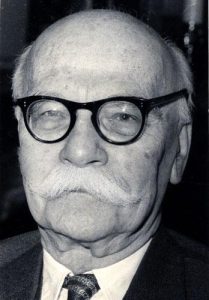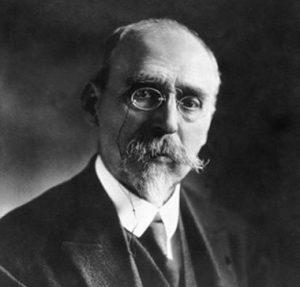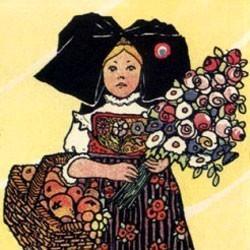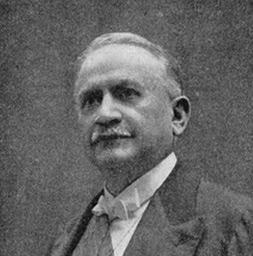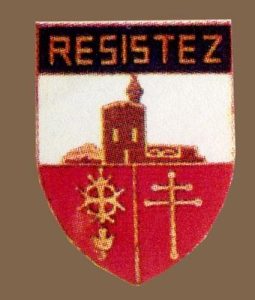A complex period
The events which took place between the wars were particularly complex. France had been the main battle field, come out of the conflict victorious, but weakened. Its youth had been mown down and part of its territory destroyed. Though the Versailles treaty of 28 June 1919 had not responded to all its demands, Alsace-Lorraine was returned, the left bank of the River Rhine demilitarised and the Rhineland would be occupied for 15 years. France was to receive 52% of the 132 milliard (U.S. billion) gold marks to be paid over thirty years as “compensation”.
The illusion of power -« France was too weak to listen to and too full of bravura to be tolerated » – prompted the Council’s President Poincare to invade the Ruhr area in January 1923 to seize the coal the Germans refused to supply. But he had to give up, mainly because of speculation against the franc, sustained by the Anglo-Saxon concern to restore balance on the continent by supporting the German economy. Franco-German reconciliation, demanded by left-wingers was embodied by Aristide Briand, who signed the Locarno Agreement with G. Stresemann in October 1925, (mutual guarantee of the Franco-German border). The Dawes-Young plans signed in June 1929 reduced the hardship of compensation by scheduling payments over a very long period.
Rising fascist movements were a major aspect of the period.
A new Protestant right wing
A new Protestant right wing, which had barely existed before 1914 due to the aggressive attitude of the nationalist Catholic right wing towards Protestantism, made its appearance. It was limited but motivated by unrelenting nationalism, with pastors Edouard Soulier and Louis Lafon very critical of the weaknesses of the parliamentary regime. An extreme right wing movement was created. It was certainly very much in the minority but it went as far as to found a royalist, antisemitic group – the Sully group of the Rev. Noël Nougat dit Vesper – and their ideas were very close to those of Action française (French Action).
Atheist communism was denounced by a movement led by the Rev. Freddy Dürrleman who in 1920 founded “la Cause”, an evangelical missionary movement. He was a presenter on protestant programmes on Radio Paris.
Most Protestants were left wing
Most Protestants were rather left wing with social Christians denouncing the position of Protestant bosses within the “two hundred families”. Southern France remained faithful to the principles of 1789 and the radical vote. The government of the Popular Front included several ministers of protestant origin, such as Paul Bastid, Marc Rucart and Jean Zay, and (a darker shade of red not being unknown) such as that of the socialist deputy and future minister André Philip who openly professed his religious beliefs, while André Chamson was an active defender of the Popular Front. With Paul-Vaillant Couturier and the writer Henri Barbusse of the communist party, the government veered to a bright red. In his book Terre nouvelle (New Earth), the pastor Tricot tried to associate Christianity with communism, an attempt rejected by the church and the party.
André Siegfried underlined the following paradox : « the Protestant boss votes left wing, the Catholic worker votes right wing ; it should be the opposite… if economic or social considerations were to prevail ».
A disenchanted generation
All these divisions were part of a whole generation’s disenchantment which, after the « heroic butchery » no longer believed in the progressive improvement of humanity. Paul Valery wrote : « we civilisations are now aware that we are human ». The developments of communism, the Dada movement, surrealism, were fertile ground for the new ideas of the generation who refused the “old men” of the Republican model, such as Clemenceau, Briand and Poincare.
The time of reconciliation
The French Protestant Federation created in 1905 brought together Reformed, Lutherans, Methodists and some years later, Baptists. The opposition between liberal and orthodox Reformed, so strong in the 19th century, had abated when the new French Reformed Church was founded in 1939, with a national council elected by the national synod. The Rev. Marc Boegner gave it growing influence, amplified by its role in the ecumenical movement.
On the other hand, social Christianity lost its impetus confronted with the rise of Karl Barth, and for some, Marxism. It leant towards the formalism of the League of Nations and gradually towards pacifism and conscientious objection.
Increasing dangers
Franco-German attempts to come closer had enabled the establishment of some links between the churches of both countries. But after the economic crisis of 1929, the threat of fascism – a term coined after the Italian experience, extended to Nazism, and sometimes to any dictatorship between the wars – became more real. Hitler’s coming to power on 30 January 1933 was vigorously denounced by French Protestantism. Many articles in Foi et Vie (Faith and Life) and in the magazine Revue du Christianisme social (Social Christian Revue) protested against the crushing of democracy, and above all, against the persecution of the Jews « victims of odious fanaticism » said Marc Boegner in 1933. Many Protestants belonged to anti-fascist movements. André Gide was a prominent anti-fascist figure.
Threatening fascism :
During the Munich crisis of 1938, attitudes were uncertain. The French Protestant Federation came out strongly against the pogrom of the « crystal night » on 9 November 1938, but many were torn between their anti-fascism and their pacifism, as was social Christianity. Suzanne de Dietrich, secretary of the International Student Federation, took a firm stand against « The shortcomings of Christians, the ease with which they cried Peace, Peace, where there is no peace ».
It should be remembered that Hitler’s accession to power, which led to the imposition on the churches of an organisation called « Deutschen Christen » (« German Christians ») was welcomed by the majority of Protestant Germans, who saw in it an end to the humiliations suffered under the treaty of Versailles. But the stranglehold of Hitler’s partisans on the Protestant church was also the reason for the creation of the Confessing Church. Under the influence of Karl Barth – expelled from Bonn in 1935 – and Lutheran pastor H. Asmussen, it published a text in 1934 which advocated spiritual resistance to Nazism : the so-called Barmen declaration. Lutheran theologians such as Martin Niemöller – interned in a concentration camp in 1937 – and Dietrich Bonhoeffer – hanged by the Nazis in 1945 – took part in active resistance.

